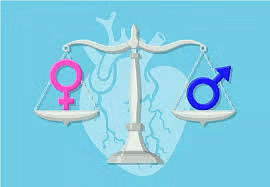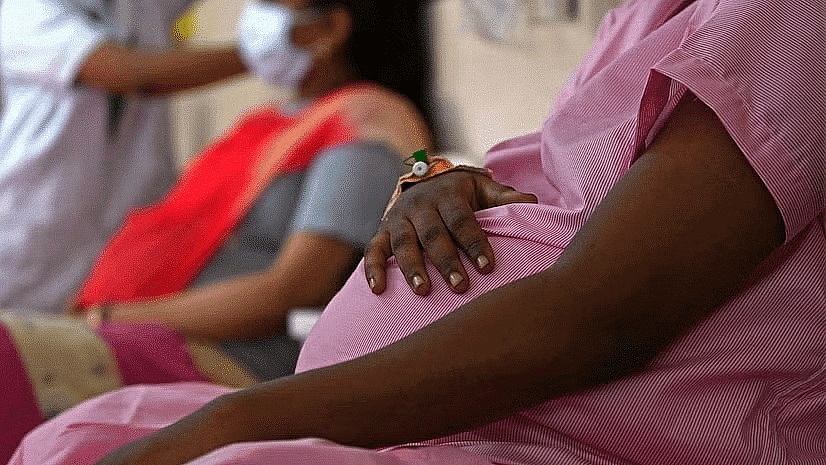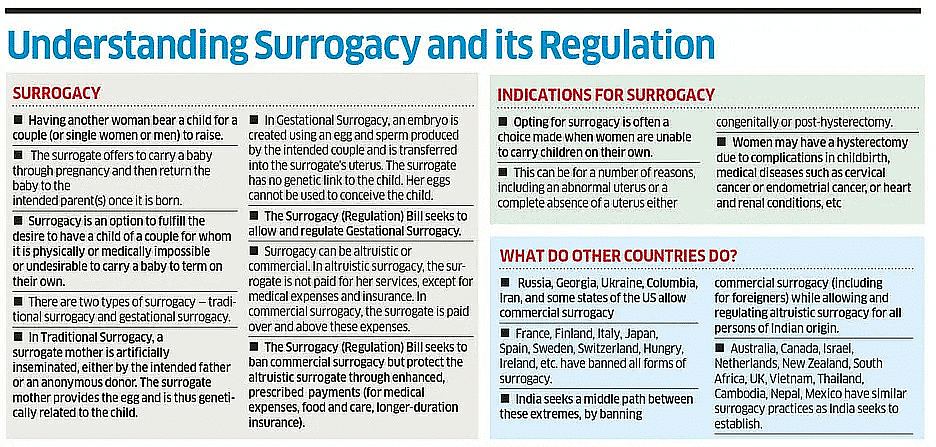Indian Society and Social Issues: July 2024 Current Affairs | General Test Preparation for CUET UG - CUET Commerce PDF Download
Global Reports on Trans Fats and Insufficient Physical Activity

Why in News?
Recently, the World Health Organization (WHO) has published the fifth milestone report on progress towards global trans fat elimination, covering the period from 2018-2023. In another development, a study was published in the Lancet Global Health journal that indicates almost 50% of adults in India engaged in insufficient levels of physical activity in 2022.
Key Highlights of the WHO Report on Trans Fat
- Industrially produced trans fatty acids (TFA) are identified as a major contributor to heart disease. TFA offers no nutritional benefits and is detrimental to public health.
- In 2018, WHO set a target to eliminate TFA from the global food supply by the end of 2023. Even though the target has not been fully met, there has been remarkable progress made and sustained elimination would be achieved by 2025.
- By 2023, WHO's REPLACE action framework facilitated widespread adoption of best-practice policies in 53 countries, impacting 3.7 billion people, a substantial increase from 6% coverage five years earlier.
- WHO initiated a Validation Programme to recognize countries achieving TFA elimination goals. Denmark, Lithuania, Poland, Saudi Arabia, and Thailand were the first to receive the TFA Validation Certificate.
- WHO recommends all countries enact and enforce best-practice policies, engage in the Validation Programme, and encourage companies to reformulate products to eliminate TFA globally.
- Implementing best practice policies in just eight additional countries, including Azerbaijan and China, would eliminate 90% of the global TFA burden.
Highlights of the Lancet Paper on Insufficient Physical Activity
- The definition of insufficient physical activity is not performing at least 150 minutes of moderate-intensity or 75 minutes of vigorous-intensity physical activity per week.
- Globally, about a third (31.3%) of adults were insufficiently physically active in 2022, up from 26.4% in 2010.
- South Asia ranks second highest globally in terms of insufficient physical activity among adults, following the high-income Asia Pacific region. In India, 57% of women were found to be insufficiently physically active, compared to 42% of men.
- Projections indicate that by 2030, 60% of Indian adults could be insufficiently active if current trends persist.
- Physical inactivity increases the risk of non-communicable diseases such as diabetes and heart disease. Rising physical inactivity, along with sedentary lifestyles, contributes to the increasing prevalence of these diseases and burdens healthcare systems.
Ensuring a Healthier Lifestyle among the Population
- Check food labels for "partially hydrogenated oils" which indicate trans fats and choose healthy fats like olive oil, avocado, nuts, and fatty fish.
- Aim for at least 150 minutes of moderate-intensity exercise or 75 minutes of vigorous-intensity exercise per week as recommended by WHO. Break up sedentary time with short walks or stretches throughout the day.
- Encourage opportunities for women to participate in physical activity, like safe walking paths and women-only fitness classes. Promote the health benefits of exercise specifically for women.
- Raise awareness about the dangers of trans fats and the importance of physical activity through educational campaigns. Partner with schools, workplaces, and community centers to spread the message.
- Advocate for stronger government regulations to limit trans fats in processed foods. Support policies that promote physical activity like walkable neighborhoods and public recreation facilities.
Issue of Menstrual Leave for Women
Recently, the Supreme Court has asked the Central Government to frame a model policy on menstrual leave for female employees. The court emphasised that this matter falls under the realm of policy-making and not within the court's jurisdiction.
What is the State of Menstrual Leaves in India?
- Menstrual (Period) Leave: It is a kind of leave where working women have the option to avail either paid or unpaid leave from the institution of her employment during her period of menstruation as such a condition adversely affects her ability to work.
- Implemented the Policy: Bihar and Kerala are the only Indian states that have introduced menstrual leave policies for women. Bihar's policy was introduced in 1992, allowing women employees two days of paid menstrual leave every month. In 2023, Bihar has also allowed menstrual leave to female students of all universities and institutions and up to 60 days maternity leave to female students above the age of 18.
- Some companies in India have introduced menstrual leave policies, including Zomato, which announced a 10-day paid period leave per year in 2020. Other companies, such as Swiggy and Byjus, have also followed suit.
- Legislative Measures Taken: There is no law governing menstrual leave in India, and there is no centralised direction for ‘paid menstruation leave’ in India. Parliament has seen attempts to introduce bills related to menstrual leave and menstrual health products, but they have not been successful so far.
Why is there a Need for Paid Menstrual Leave for Women?
- Health and Well-being: Menstruation can cause physical discomfort (cramps, bloating) and emotional distress. Paid leave allows women to prioritize their health and manage these symptoms without financial penalty.
- Workplace Inclusivity and Gender Gap: This leave will normalize menstruation, reducing stigma and encouraging open discussion about menstrual health. Its impact on work performance helps address the gender pay gap by enabling women to fully participate in the workforce without sacrificing income.
- Productivity and Retention: Studies suggest that menstrual leave can improve productivity by allowing women to manage their periods effectively and avoid working while experiencing discomfort. It can also contribute to higher employee retention.
- Legal Perspectives: Article 15(3) permits special provisions for women, countering claims of discrimination against men who can't avail menstrual leave. Article 42 mandates the state to ensure "just and humane conditions of work" and "maternity relief." Menstrual leave is seen as an extension of this responsibility, promoting a humane work environment for women during menstruation.
What are the Arguments Against the Menstrual Leaves?
- Discouragement of Hiring Female Employees: Paid menstrual leave might disincentivize companies from hiring women due to perceived absenteeism. Employers may perceive female employees as a liability due to the additional burden of paid leave every month.
- Discrimination at Workplace: Accommodating menstrual leaves may disrupt workflow, increase workload for other team members, or create resentment among employees who do not receive similar benefits.
- Enforcement Issues: Implementing paid leave for menstruation raises challenges such as determining legitimate use, preventing misuse, and defining acceptable enforcement methods for employers. Sensitivity and respect are crucial in developing policies around menstruation.
- Reinforcing Stigma: Special leave policies could highlight menstruation as a negative aspect, potentially leading to period shaming and discrimination.
Way Forward
- Promoting Menstrual Health Literacy: Ensure that employers, employees, and medical professionals have access to high-quality information about menstrual health and effective treatment options.
- Incorporating Adequate Rest Breaks: Provide workers, especially those who menstruate, with the ability to take breaks and access clean toilet facilities. This benefits all workers and reduces the risk of workplace injuries and illnesses.
- Incentivising Menstrual Leave Policies: The government could incentivize menstrual leave by providing tax exemptions to companies offering it and by introducing gender-neutral leave policies for all employees. Consideration could also be given to government aid covering leave costs through Direct Benefit Transfer (DBT).
- Access to Effective Treatment: Workplaces should provide free emergency period products, pain medication, and support for employees to access quality medical advice and treatment for severe menstrual symptoms.
- Flexible Working Conditions: Allow for flexible work arrangements, such as the ability to work from home or take shorter breaks, rather than requiring full-day leave.
- Adequate Standards for Working Conditions and Labour Rights: Improve global minimum labour standards regarding work hours, wages, health and safety, and equal opportunities, which would eliminate the need for separate menstrual leave policies.
Mains Question
Discuss the need for a policy measure on menstrual leave for women. What are its implications on gender equality and workforce dynamics? What measures can ensure its effective implementation?
Nata Pratha

Why in news?
The ‘Nata Pratha’ is comparable to modern forms of prostitution. The NHRC has called for its eradication and abolition due to the immoral consequences it has on women and minor girls.
Suggestions by NHRC
- Regulation under Human Trafficking: Individuals involved in forcing women into ‘Nata Pratha’ must be prosecuted under laws relating to human trafficking.
- Prosecution under POCSO Act: Sale of minor girls should be prosecuted under the POCSO Act, which aims to protect children from sexual offenses and establish special courts for trial.
- Registration of Cases: Setting up a group at the village level to register its cases.
- Awareness & Improvement: Building awareness, providing education, and employment to improve the economic and social status of girls and women.
What is Nata Pratha?
- The word ‘Nata’ means relationship. It involves selling “on a stamp paper” or marrying off underage girls from some communities.
- Enroll now for UPSC Online Course
- Prevalent: This custom is prevalent in parts of Rajasthan, Gujarat, and Madhya Pradesh, mainly practiced by the Bhil tribe.
- Provision: It allows a man to have a live-in relationship with a married woman, under certain conditions.
- No Need for Formal Ceremony: No formal marriage ceremony is required under this system.
- Pay Money: The man has to pay a “bride price” to the married woman, with the sum depending on various factors.
Global Gender Gap Index: WEF

Why in news?
Recently, the World Economic Forum released the 18th edition of its annual for 2024, comprehensively benchmarking gender parity across 146 economies worldwide.
What are the Key Findings of the Report?
Overall Findings:
- The global gender gap score in 2024 is 68.5%, meaning 31.5% of the gap remains unaddressed.
- Progress has been extremely slow, with only a 0.1% point improvement from 2023.
- At the current rate, it will take 134 years to reach full gender parity globally far beyond the 2030 SDG target.
- The gender gaps remain largest in Political Empowerment (77.5% unaddressed) and Economic Participation & Opportunity (39.5% unaddressed).
Top-Ranking Countries:
- Iceland (93.5%) remains the world's most gender-equal society for the 15 consecutive year. It is followed by Finland, Norway, New Zealand and Sweden in the top 5 rankings.
- 7 out of the top 10 countries are from Europe (Iceland, Finland, Norway, Sweden, Germany, Ireland, Spain).
- Other regions represented are Eastern Asia and the Pacific (New Zealand at 4), Latin America and the Caribbean (Nicaragua at 6), and Sub-Saharan Africa (Namibia at 8).
- Spain and Ireland made notable jumps into the top 10 in 2024, climbing 8 and 2 ranks respectively compared to 2023.
Regional Performance:
- Europe leads 75% of its gender gap closed, followed by Northern America (74.8%) and Latin America & Caribbean (74.2%).
- The Middle East and North Africa region ranks last at 61.7% of its gender gap closed.
- Southern Asia region ranks 7 out of 8 regions with a gender parity score of only 63.7%.
Economic & Employment Gaps:
- Women's workforce representation lags behind men's across nearly every industry and economy at 42% overall and only 31.7% in senior leadership roles.
- The "leadership pipeline" shows a 21.5% point drop from entry-level to managerial level for women globally.
- Women's hiring into leadership roles deteriorated in 2023-24 due to worsening economic conditions.
Care Burden Impact:
- Women’s workforce participation is recovering from the recent surge in caregiving responsibilities, highlighting the urgent need for equitable care systems.
- Equitable care policies like paid parental leave are increasing but remain inadequate in many countries.
Technology & Skills Gaps:
- Women remain underrepresented in STEM at 28.2% of that workforce versus 47.3% in non-STEM roles.
- Gender gaps exist in skills like AI, big data, cybersecurity which will be crucial for the future of work.

How has India Fared in the Gender Gap Report 2024?
- India’s Rank: India has slipped two places in the global rankings to 129th in 2024 127th in 2023 among 146 countries. Within South Asia India ranked fifth after Bangladesh, Nepal, Sri Lanka, and Bhutan. Pakistan ranked last in the region.
- Economic Parity: India is among the countries with the lowest levels of economic parity, similar to Bangladesh, Sudan, Iran, Pakistan, and Morocco, with less than 30% gender parity in estimated earned income.
- Educational Attainment: India showed the best gender parity in secondary education enrolment. India ranked 65 in political empowerment of women and 10 in parity of years with female/male heads of state over the past 50 years. However, women's representation at the federal level, in Ministerial positions (6.9%), and in Parliament (17.2%) remains low.
- Gender Gap Closure: India has closed 64.1% of its gender gap as of 2024. The slip in ranking from 127 to 129 was primarily due to small declines in 'Educational Attainment' and 'Political Empowerment' parameters, although 'Economic Participation' and 'Opportunity' scores saw slight improvements.
Mains Question
Critically analyse India's performance in the Global Gender Gap Index, 2024. Discuss the key areas of improvement and suggest measures to accelerate gender parity in India.
School in a Box Initiative

Context
In Assam, amid devastating floods and landslides claiming lives, children in relief camps will receive educational support through a school in a box initiative.
- Designed by UNICEF, these kits cater to children aged 6-18, providing learning materials to ensure education continuity despite displacement and trauma. disasters.
The initiative to provide “school in a box” kits during Assam’s floods reflects several ethical values. It prioritizes:
- Compassion and Care: By addressing the educational needs of children amidst trauma, the initiative demonstrates compassion and care for vulnerable populations.
- Equity and Inclusion: The kits are designed to cater to children aged 6-18, ensuring inclusivity and equitable access to educational resources regardless of age or background.
- Responsibility and Accountability: Training sessions for officials and grassroots workers underscore a commitment to responsibly managing relief efforts, ensuring accountability in education and relief camp operations.
- Empathy and Support: By considering the psychological impact of displacement, the initiative shows empathy and provides essential support to help children overcome trauma and continue their education.
- Sustainability: Initiatives such as installing sanitary napkin vending machines in relief camps reflect a sustainable approach to addressing broader health and hygiene needs, promoting dignity and well-being.
Maternity Leave for Surrogates

Why in news?
Recently, the Government has notified an amendment to Central Civil Services (Leave) Rules, 1972 to grant maternity leave and other benefits to government employees in case of children born through surrogacy. This move aims to address the existing gap in the leave policies for government employees who opt for surrogacy.
What are the Provisions of Notified Amended Rules?
Maternity Leave for Surrogate and Commissioning Mothers: It allows women government employees who have children through surrogacy to avail 180 days of maternity leave. This includes both the surrogate mother and the commissioning mother (the intended mother) with less than two surviving children.
Paternity Leave for Commissioning Fathers: The new rules also grant 15 days of paternity leave to the "commissioning father" (the intended father) who is a male government servant with less than two surviving children. This leave can be availed within 6 months from the date of delivery of the child.
Child Care Leave for Commissioning Mothers: Additionally, the commissioning mother with less than two surviving children is eligible for childcare leave, as per the existing provisions in the Central Civil Services (Leave) Rules.

What is Surrogacy and Related Regulation?
- About: It is a practice where a woman gives birth to a child for an intended couple with the intention to hand it over to them after the birth. It is permitted only for altruistic purposes for couples who suffer from proven infertility or disease.
- Surrogacy Criteria: To avail of surrogacy, a couple should be married for at least 5 years, with specific age criteria for wife and husband. They should not have any living child unless the child has disabilities or a life-threatening illness. The couple must also have certificates of eligibility and essentiality, proving and a court order for parentage and custody of the surrogate child. Additionally, the intended couple must provide insurance coverage for the surrogate for 16 months.
- Criteria for Surrogate Mother: She must be a close relative of the couple, a married woman with her own child, specific age criteria, and have specific medical and psychological fitness certificates.
- Regulation: National Surrogacy Board and State Surrogacy Boards are responsible for regulating surrogacy clinics and enforcing standards. The Act prohibits practices like commercial surrogacy, embryo selling, and exploitation or abandonment of surrogate mothers or children. Violations can lead to imprisonment for up to 10 years and a fine of Rs. 10 lakh.
|
164 videos|800 docs|1160 tests
|

















